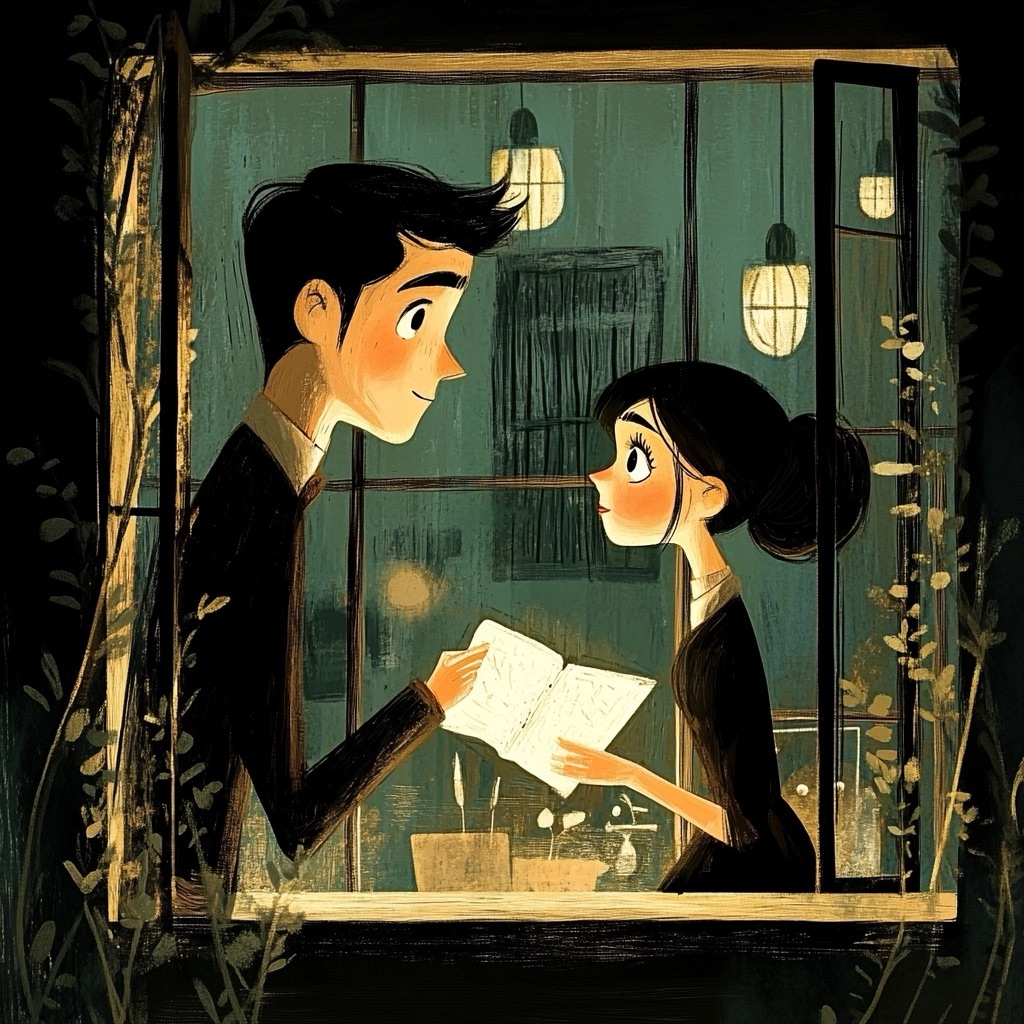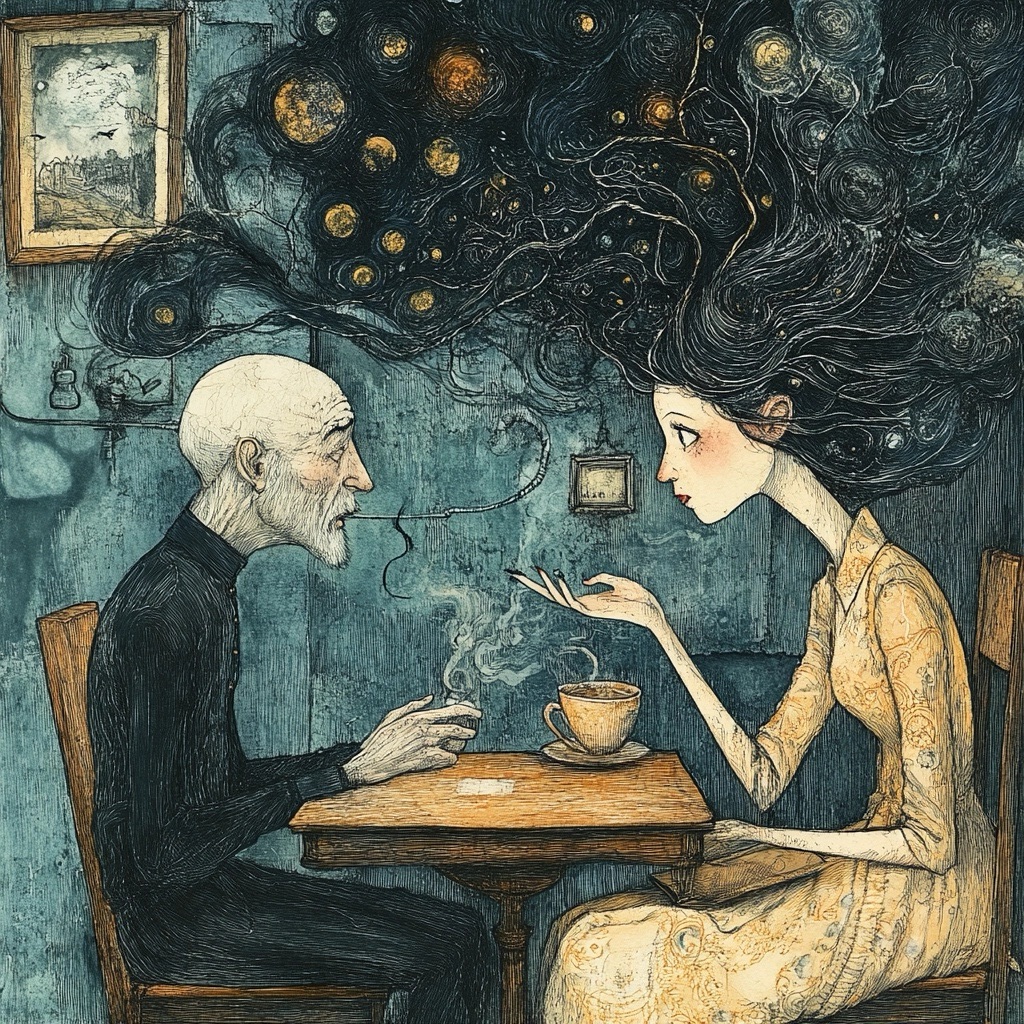
Dialogue is one of the most powerful tools in the storyteller’s arsenal. When used effectively, it does more than just convey what characters are saying; it reveals their personalities, advances the plot, and immerses the reader in the story’s world. While some writers may shy away from dialogue, fearing it will slow down the narrative or clutter the story with unnecessary chatter, those who master this art form understand that dialogue can be the lifeblood of a compelling tale. In this essay, we will explore the various ways in which dialogue can be used to drive storytelling, discussing its unique strengths, potential pitfalls, and the delicate balance required to make it work.
The Role of Dialogue in Character Development
Dialogue is perhaps the most direct way to breathe life into characters. Through their words, readers gain insight into a character’s personality, background, and motivations. Unlike exposition, which tells the reader what a character is like, dialogue shows it, making the experience far more engaging. For instance, a character who speaks in short, clipped sentences might be perceived as terse or no-nonsense, while another who rambles might be seen as nervous or disorganized.
Consider the difference between these two approaches:
Exposition: John was an impatient man. He didn’t like to waste time on pleasantries.
Dialogue: “Can we skip the small talk and get to the point?” John snapped.
The dialogue not only conveys John’s impatience but also allows the reader to infer it, creating a more dynamic and interactive reading experience. Additionally, dialogue can reveal subtext—what a character truly thinks or feels beneath the surface. A well-crafted conversation can subtly hint at a character’s internal conflict, secret desires, or hidden agenda without overtly stating it.

Advancing the Plot Through Dialogue
Dialogue can be a vehicle for moving the plot forward in ways that feel natural and unforced. When characters interact, they exchange information, make decisions, and influence one another, which propels the narrative. However, for dialogue to effectively advance the plot, it must be purposeful. Every line should contribute to the story, either by revealing new information, deepening relationships, or setting up future events.
In the hands of a skilled writer, dialogue can introduce plot twists, foreshadow future developments, or heighten tension. For example, a seemingly casual conversation between two characters might drop hints about a coming betrayal or an unexpected alliance, creating suspense and anticipation for the reader. This technique is often employed in mystery and thriller genres, where dialogue can be used to mislead or manipulate both the characters and the audience, only to reveal the truth later in a shocking twist.

Dialogue as a Tool for World-Building
In addition to character and plot, dialogue is an essential tool for world-building. Through the way characters speak, writers can convey the cultural, social, and political landscape of the story’s setting. This is particularly important in genres like fantasy, science fiction, and historical fiction, where the world of the story may be vastly different from our own.
The language, slang, and idioms used by characters can indicate their place within a society, their level of education, or their regional background. For instance, a character in a dystopian future might use jargon that reflects the technological advancements or societal decay of that world, while a character in a historical drama might speak with the formality or dialect of their time.
Moreover, dialogue can subtly introduce the reader to the rules and norms of the story’s world without resorting to heavy-handed exposition. Instead of explaining how a magic system works, a writer might reveal it through a conversation between a seasoned wizard and an apprentice. This method of world-building allows readers to discover the world organically, making the experience more immersive.

Avoiding the Pitfalls of Dialogue
While dialogue is a powerful storytelling tool, it comes with its own set of challenges. One common pitfall is using dialogue as a mere expositional device, where characters tell each other information they already know just for the benefit of the reader. This can feel unnatural and contrived, pulling the reader out of the story.
For example, consider the following dialogue:
Character A: “As you know, we’re heading to the capital tomorrow because the king has summoned us.”
Character B: “Yes, and we must arrive before sunset to avoid the guards.”
This exchange is clunky and feels more like the characters are reciting facts than having a genuine conversation. A more effective approach would be to find a way to convey this information through action or a more subtle exchange.
Another challenge is ensuring that dialogue feels authentic to each character. Every character should have a distinct voice that reflects their personality, background, and role in the story. This can be achieved through variations in vocabulary, sentence structure, and tone. If all the characters sound the same, the dialogue can become monotonous, and the characters themselves can lose their individuality.
Finally, it’s important to strike a balance between dialogue and other narrative elements. Too much dialogue can slow the pacing of the story, while too little can make it difficult for the reader to connect with the characters. The key is to use dialogue strategically, allowing it to enhance the story without overwhelming it.
Crafting Effective Dialogue: Techniques and Tips
To craft effective dialogue, writers should pay close attention to the rhythm and flow of conversations. Real-life dialogue is often fragmented and filled with interruptions, but written dialogue needs to strike a balance between realism and readability. Overly realistic dialogue, with all its hesitations, repetitions, and filler words, can be tedious to read. Conversely, overly polished dialogue can feel unnatural. The goal is to create conversations that feel both authentic and purposeful.
One technique is to focus on subtext—the meaning behind the words. People often say one thing but mean another, and this can add layers of complexity to a conversation. For example, a character might say, “I’m fine,” when they are clearly upset. The discrepancy between the words and the character’s true feelings can create tension and intrigue, drawing the reader deeper into the story.
Another important aspect is the use of silence and pauses. What characters don’t say can be just as powerful as what they do. A well-timed pause or an unfinished sentence can speak volumes, suggesting hesitation, uncertainty, or unspoken thoughts. This can add a layer of realism and depth to the dialogue, making it more engaging for the reader.
Conclusion: Dialogue as the Heart of Storytelling
Dialogue is more than just a way for characters to communicate; it is a dynamic and versatile tool that can drive every aspect of storytelling. When used effectively, it reveals character, advances the plot, builds the world, and engages the reader on multiple levels. However, mastering dialogue requires a keen ear for language, a deep understanding of the characters, and a careful balance between realism and narrative flow.
In the end, dialogue is about more than words—it’s about what those words reveal, what they conceal, and how they shape the story. As with any aspect of writing, practice and attention to detail are key. By honing the craft of dialogue, writers can create stories that are not only rich and compelling but also resonate deeply with readers, leaving a lasting impact long after the conversation has ended.
Leave a Reply